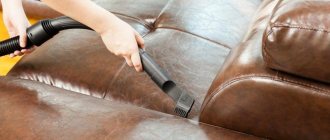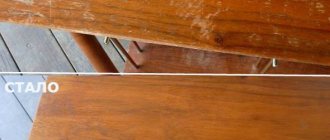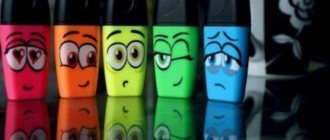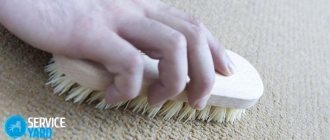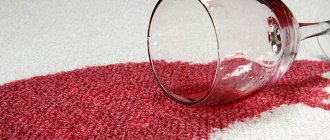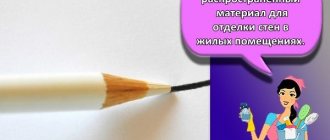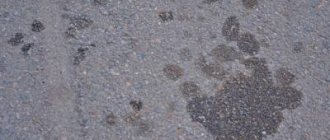Any furniture will sooner or later develop stains, especially when it comes to the dining table. It is recommended to cover the wooden surface with a protective layer of varnish, otherwise it will be almost impossible to remove stains. But there are general recommendations for caring for furniture that should be followed:
- Try to eliminate contaminants as soon as they appear;
- Use protective products that prevent stains from appearing;
- Before using a cleaning agent, test its effect on an inconspicuous area of the material;
- An important rule when removing stains is not to use force while rubbing; it would be better to blot the contaminated areas;
- Stain remover should be used with caution - it can damage the finish if rubbed for too long.
How to remove a jam stain on a sofa?
— In order to remove a jam stain, you need to apply a little soap mixed with vinegar and immediately blot it, and then sprinkle the area with salt. When this area is dry, vacuum the sofa. — Fresh grease stains should be sprinkled with salt and wiped using bread crumbs.
Interesting materials:
Where did Gandalf go? Where does Ulyanovsk belong? Where did Odysseus return after the Trojan War? Where did everyone go at the end of The Lord of the Rings? Where is the micro SD inserted? Where to insert micro SD into laptop? Where to enter codes in Brawl Stars? Where to enter codes in Sims 4 on PS4? Where to enter GPS coordinates? Where to enter promotional codes for Gems in Brawl Stars?
Remove from wooden surface
It is much more difficult to clean dirt from wood than from metal or plastic. Regardless of the type of wood from which it is made, the coating is easily damaged. For example, if you place hot dishes on it without a special stand. In this case, moisture gets under the varnish, which causes stains. However, there is a way to remove water stains from wood. To do this, pour flour onto the desired area and rub with a cloth dipped in regular vegetable oil. You can add table salt. After treatment, leave the surface in this condition for 1-2 hours, and then wipe with a woolen cloth. Methods for removing stains depend on the source of their occurrence. For example, paint stains from a polished surface cannot be removed with chemical solvents. You risk damaging the coating.
Remove white from hot on polished surface
You can eliminate whitish stains in the following ways:
- Iron with an iron, from which you first need to drain the water. Place the fabric over the stain, turn on the iron and iron for 2-3 minutes. If traces still remain after this, you can repeat the action;
- Apply lemon oil to the stain and scrub with a metal sponge. The movements should be light and careful, and the oil will prevent small scratches from appearing. At the end of the procedure, wipe the surface with denatured alcohol;
- You can try to remove the stain by treating it with toothpaste. But do not rub too long to avoid damaging the varnished surface;
- You can use a hairdryer to dry the stain, which may take 10 to 30 minutes. Direct the hair dryer evenly. After traces of moisture have disappeared, it is advisable to apply olive oil to the surface to prevent it from cracking;
- A solution of soda and water (2:1) will help get rid of stains, which should be wiped with a cloth soaked in it.
Important! Toothpaste should be white, without any dyes.
This is interesting: If drops of perfume, lipstick, foundation or varnish get on your clothes, how to remove stains
Wash marker, felt-tip pen, wax pencil
If a child gets carried away with drawing and switches from paper to furniture or metal parts, the parents will have to wash the result of this creativity. A permanent marker contains components such as ink, solvent and resin. This makes it practically indelible. The solution to this problem is as follows. To remove marker marks, apply toothpaste to the wooden surface until it completely covers them. Wet a clean rag with water and rub the paste in a circular motion for 3-5 minutes until most of the paint has dissolved. Remove any remaining toothpaste with a sponge. Add baking soda if there are any colored spots on the furniture and repeat the steps. The resulting mixture should be rubbed less intensely than without adding soda.
Attention! If during the work the texture of the contaminated area changes, it is recommended to sand the entire remaining surface.
Wax pencils can be washed much easier: with laundry soap or dishwashing gel. There is also a professional cleaner for removing such stains: Starwax.
Remove fat from slime and from fingers
Stains in a visible place do not please anyone. To correct the situation and return the furniture to its previous appearance, you can try any of the following methods:
- Wipe oil stains with a soft microfiber cloth soaked in a small amount of drying oil;
- If the product is made of natural wood (oak, walnut), a diluted iodine solution will help. Apply a few drops to the stain with a cotton pad, then blot with a rag;
- Pour 1 teaspoon of ammonia and 2 teaspoons of lemon juice into a liter of water. Stir. Wipe the stain with this solution, and remove the remaining residue with a cloth. Can be repeated 2-3 times. To avoid skin irritation, use rubber gloves.
Many children like the toy slime (or slime), which is a viscous colored substance, sometimes with the addition of glitter.
This is interesting: How can you remove red wine stains on white or colored clothes at home?
Its disadvantage is that it sticks well to any surface, leaving behind greasy stains, which can be removed as follows.
Prepare a mixture of lemon juice, ammonia and salt. Apply it for 10-15 minutes, then remove with a damp cloth.
Information. A melamine sponge does an excellent job of removing any dirt. It is enough to just run it over the surface 3-5 times without making much effort.
If you don’t have the necessary ingredients on hand, you can wash off the grease with dishwashing gel or laundry soap. The solvent can only be used on furniture that is not varnished.
Wipe off iodine and brilliant green
Quite often you have to deal with stubborn iodine stains on furniture and on the floor, which can be cleaned using one of the following methods:
- Baking soda will help remove the antiseptic. Wet the surface and sprinkle a sufficient amount of powder onto the contaminated area. Cover the area with a damp cloth and leave it like that for 10 hours. After this, remove the remaining soda and wipe the treated surface dry;
- You can also remove iodine using sodium hyposulfite, which is sold in pharmacies without a prescription. Pour this product onto the stain and watch it disappear. Finally, rinse the cleaned area with water and wipe with a dry cloth;
- A stain remover containing chlorine can also remove the antiseptic if you apply it for 10-15 minutes, then wipe with a hard (but not metal) sponge. Pay attention to the instructions for using the chemical, as it is not suitable for all surfaces and can damage the structure of the material;
- You can get rid of dark iodine stains by using fresh potatoes. Use a slice of its tuber to rub the stain until it becomes invisible, then wash the area and wipe dry. This method is also suitable for cleaning wallpaper, floors and metal;
- Hydrogen peroxide is one of the most inexpensive means for removing iodine from furniture. It can be bought at any pharmacy and used as follows: soak cotton wool in the solution and rub the stain well with it. If necessary, you can repeat the action until the streaks disappear. After the procedure, be sure to wipe the table with a clean cloth;
- Remove iodine stains from a white wooden surface using an aspirin tablet dissolved in 100 ml. warm water. Fresh stains can be easily removed with boric acid or ethyl alcohol. You can also treat the area with sodium thiosulfate solution, after which you should wash with warm water and soap;
- And the last method: pour a teaspoon of ammonia into 400 ml of water and wipe the surface with this solution.
This is interesting: How to remove greasy and oil stains from a sofa
Every first aid kit has some brilliant green stuff, which becomes simply irreplaceable if you have small children growing up at home.
However, if this solution gets on the skin, it will take a very long time to wash it off, and from furniture it will take even longer.
But there are effective means for removing it. As you know, it is easier to remove fresh stains than already dried ones, especially when it comes to brilliant green.
Therefore, as soon as you notice it on your furniture, quickly blot it with a dry cloth.
Do not rub under any circumstances, otherwise the area of contamination will only increase. First try to remove the remaining traces using gentle methods, and if they do not help, move on to aggressive chemicals, using gloves and ventilating the room. When removing stains from wood, consider whether it has a varnish coating.
Information. It is impossible to wash brilliant green from a surface not treated with varnish. In this case, only sanding will be effective, no matter how fresh the stain is, since the wood is too quickly saturated with dyes.
It is much easier to remove brilliant green from a wooden surface coated with varnish. Then you can pour baking soda, add vinegar and, after the reaction is complete, you can wipe it with a damp cloth. In the same way, the brilliant green is removed from the parquet.
Traces of green stains can be wiped off with an eraser after wetting the surface with water. If you leave cotton wool with hydrogen peroxide on the stain, then after a few hours there will be nothing left of the green color. A solution of rubbing alcohol and lemon juice can also remove stains.
Favorite hair dryer and dish detergent
One reliable option for getting rid of stains is to use a hair dryer and a simple dishwashing detergent. Turn on the hairdryer and blow hot air over the crayon marks. The wax base of the pencil will become softer, making it easier to erase. Use a cloth or paper towel to clean and use a small amount of product. Next, simply erase the pencil marks.
Microfiber cloths are also a good option, but be aware that things may not turn out in your favor, and a relatively expensive cloth will simply go bad before it has time to remove the stain.
It is better to try using unnecessary fabric from a thick T-shirt so that if necessary, throw away the damaged material. Don't rub stains with your own clothes that you're still wearing because when the crayon wax melts, it will redistribute itself onto the material. This is a rather complicated method for those people whose walls have a textured, that is, uneven, surface. The main thing is to make a little effort and use a little dish soap, and then there will be no trace of stains.
How to remove artistic painting on plastic panels?
Because You are not logged in. To come in.
Because you are not a trust user. How to become a trustee.
Because The topic is archived.
Because You are not logged in. To come in.
Because you are not a trusted user (phone number is not verified). Enter and confirm your phone number. Read more about trusts.
Because The topic is archived.
Because You are not logged in. To come in.
Because you are not a trusted user (phone number is not verified). Enter and confirm your phone number. Read more about trusts.
Because The topic is archived.
Because You are not logged in. To come in.
Because you are not a trusted user (phone number is not verified). Enter and confirm your phone number. Read more about trusts.
Because The topic is archived.
Because You are not logged in. To come in.
Because you are not a trusted user (phone number is not verified). Enter and confirm your phone number. Read more about trusts.
Because The topic is archived.
Because You are not logged in. To come in.
Because you are not a trusted user (phone number is not verified). Enter and confirm your phone number. Read more about trusts.
Because The topic is archived.
Because You are not logged in. To come in.
Because you are not a trusted user (phone number is not verified). Enter and confirm your phone number. Read more about trusts.
Because The topic is archived.
Because You are not logged in. To come in.
Because you are not a trusted user (phone number is not verified). Enter and confirm your phone number. Read more about trusts.
Because The topic is archived.
Because You are not logged in. To come in.
Because you are not a trusted user (phone number is not verified). Enter and confirm your phone number. Read more about trusts.
Because The topic is archived.
Because You are not logged in. To come in.
Because you are not a trusted user (phone number is not verified). Enter and confirm your phone number. Read more about trusts.
Because The topic is archived.
Because You are not logged in. To come in.
Because you are not a trusted user (phone number is not verified). Enter and confirm your phone number. Read more about trusts.
How to erase colored pencil from walls and floors
Choose the cleaning method that is safest and most effective for your surface. When using liquid cleaner. Be sure to test its effect on a small, hidden area first. Make sure there is no negative reaction from the surface being cleaned. The following steps will help you remove crayon marks from walls, floors, and chalkboards.
You will need:
- Scraper (such as a plastic spatula or spoon)
- Eraser (eraser)
- Adhesive for rubber
- Mayonnaise
- Baking soda
- Toothpaste
- Shaving cream
- Multi-purpose lubricant WD-40
- Gasoline for lighters
Removing pencil marks:
- Using a plastic spatula or spoon, carefully scrape off any crayon marks. Be careful not to scratch the surface or rub the pencil across the surface.
- Some types of pencils can be easily removed with a regular school eraser.
- Apply a layer of rubber cement to the pencil marks. Wait for the rubber glue to dry. And then remove the film of dried glue along with the remaining pencil.
- Mayonnaise copes well with traces of colored and simple pencils. On polished furniture and vinyl surfaces. Using a napkin, lubricate the areas outlined with pencils with mayonnaise. And leave for a few minutes. Then simply wipe off the mayonnaise along with the pencil marks.
- Sprinkle baking soda on a damp cloth and use it to erase pencil marks.
- Apply some regular white toothpaste to a dry cloth. And gently rub the outlined area.
- Apply shaving cream to the pencil marks and use a stiff brush or sponge to clean the area.
- Spray WD-40 All-Purpose Lubricant onto penciled areas of wallpaper or porous surfaces such as concrete and wipe away marks.
- Dip a cloth in lighter benzene and gently wipe away crayon or pencil marks. After the procedure, rinse the rag thoroughly and ventilate the room.
Advertisements on NN.RU – For children
Cool denim overalls (very little used). View/pick up – Automobile Plant (Sotsgorod 2), I can bring it to Minin Square, Gorky Square. Price: 500 rub.
New guipure dress for 2-3 years. Good for a skinny girl. Peach colour. I can look/pick up – Automobile Plant (Sotsgorod 2). Price: 300 rub.
Selling a loft bed “Baby” made by Yaroff in good condition. Pull-out table with a small bookcase. Price: 9,500 rub.
Festive dress, for 1.5-2.5 years After 1 child. Used 1 time for photos. Back length – 45 cm. Length – 26.5 cm. Try it on – Automobile Plant. Price: 400 rub.
Home Remedies
Rub mayonnaise onto crayon stains and let it soak in for a few minutes before wiping the surface with a damp cloth. It's better not to try it on white walls! Also, try some non-gel toothpaste. Take a brush and apply the paste to it, then scrub away the pencil stain. The abrasive in toothpaste dissolves the chalk. Finish by wiping the surface with a damp cloth.
Options for solving the problem
I’ll say right away that not all pencil marks can be removed; the final result is influenced by many factors, which we will discuss below. It is important to understand one more simple truth: you need to start with simpler techniques and only then try something more radical. If a problem can be solved with little effort, then there is no need to use any complex solutions.
Factors influencing the result
Drying off a pencil can be very simple, or it can be very difficult. This is influenced by a number of factors:
- Pencil type . As practice shows, the simple version is much easier to remove than the colored one. Different manufacturers may have different lead characteristics, which also affects the difficulty of removing lines;
Different types of lead may have different characteristics and be removed differently
- Depth of lines on wallpaper . The harder you pressed the pencil, the deeper the marks will be and the more difficult the process of eliminating them will be. Carefully inspect all the lines to understand how difficult the work is ahead of you;
- Type of wall covering . Wallpaper may differ in its texture, softness and the presence of embossing on the surface. It is easiest to remove problems from smooth, plain surfaces; the more distinct the relief, the more difficult it is to deal with marks on the walls;
Embossed surfaces create many problems
How can I remove a pencil?
Now let’s figure out how you can remove traces of children’s art or accidentally drawn lines with your own hands:
It’s easy to work with: you need to carefully erase all traces, moving along the lines. You can go through it several times, gradually removing a thin layer of lead.
The photo shows what this option looks like and how it is marked. The price of such products is low, but the quality is much better than standard rubber bands.
You can buy such an eraser in art stores; it is difficult to find it in ordinary office supplies.
Removing pencil or pen marks using this technique is easy:
- A paste is prepared from washing powder to which a little warm water is added;
- The mixture is rubbed into the surface where there are marks that need to be removed;
- After a few minutes, you can gently scrub the surface with a brush. If necessary, the process is repeated again.
This option is especially good for textured surfaces.
To remove a pencil or pen from them, you need to soak a cotton swab in solvent and carefully wipe off all traces on the surface.
If you don’t have a solvent on hand, you can use ordinary acetone-based nail polish remover. She also does a good job with this kind of work.
In this case, work can be carried out as follows:
These products cope well not only with their direct responsibilities, but also with pencils and pens on the walls.
It is most convenient to use options in the form of sprays, which form a thick foam; it removes unwanted marks very well.
The composition must be used as prescribed by the instructions on the package.
If none of the above remedies help, then it will be easier to decorate the walls or wait until the child grows up and make repairs. You don’t need to prepare your own products from available ingredients; they are no better than what we talked about in the article.
General rules for removing stains
1. Fresh (not older than three hours old) stains are easier to remove than dried and firmly absorbed stains. Therefore, we must act quickly.
2. If the stain is fresh, first blot it with a dry paper towel so that it absorbs as much of the cosmetic as possible. Now sprinkle the stain with salt or baby powder, they absorb grease very well.
3. If several hours have passed since the incident and the stain has dried, remove the top layer with a plastic spoon.
4. Remove the stain from the wrong side of the fabric by placing paper napkins underneath.
5. Never rub the stain: it will only absorb it more thoroughly. The movements should be blotting.
6. When purchasing a stain remover, be guided by the type of stain and the type of material that needs cleaning. Please read the instructions first and strictly follow them.
7. For any stain removers, both homemade and industrial, first test on a small area of fabric, not the most visible part of the product. If the color remains the same, you can proceed.
8. Begin removing dirt using a weak solution. If necessary, gradually increase the concentration.
9. Peroxide and other stain-fighting products should not be poured onto the stain, but applied with soaked cotton pads or a soft-bristled toothbrush (for example, for very young children). First, treat the area around the stain, then the edges, and only then start working on the middle. This technique will prevent the stain from spreading.
10. After local processing, wash the item completely. First, read the information on the label about caring for the damaged item: what is allowed for silk is not allowed for linen.
11. Do not attempt to remove stains or stains in the washing machine, especially with the drying cycle on. After this, it will be almost impossible to remove traces.
Why is pencil lead difficult to clean?
In a pencil, the writing part is a lead enclosed in a shell. Traditionally, such a shell is made of wood. The lead itself is a layered form of carbon. Actually, this is carbon, crystallized. The lead crystals have a hexagonal shape. The chemical properties of this substance are such that pencil marks from the surface of furniture only mechanically. It is very resistant to other chemicals. However, there are folk tips whose recipes can successfully combat such persistent pollution.
kak.medicalfirst.ru
If you notice that there is a crack or chip on a cabinet, wooden table or door, do not be upset. This does not mean that it is time to throw away or replace the furniture. Today there are technologies that make it possible to restore wooden surfaces, which, after completion of the work, look like new.
Chips and cracks can be masked using wax pencils, which are also quite often used in the case of laminate. They are available for sale in a wide range, so it will be quite easy to choose exactly the one you need.
Hard sponges
When special metal sponges appeared on sale, capable of removing serious stains not only from dishes, parents all over the world rejoiced. Now they could easily scrub the stain off many surfaces. You will probably need to work hard to clean a textured surface. Don't worry, you can do it! You should not take risks and use such a product to clean glossy or sparkling walls, because the consequences will be disappointing. Test your product the first time in a safe place.
Remember that if you rub a stain on a shiny surface, it will no longer shine as much. It is better then to use one of the methods presented above, which is suitable for the texture of your wall.
Routes to finance
Penciling on the walls is a punishable discovery, but cleaning does not need to be added to the punishment. For a cheap and effective way to remove these offending pencil marks, turn to common household items and watch them disappear before your eyes!
How to Remove Pencil with Vinegar
Vinegar is one of the most effective ways to remove crayon from painted walls. The acetic acid in vinegar breaks down both the wax and pigment components of the pencil mark.
If it works on your surface, this chemical reaction can save a lot of effort in cleaning.
How to do it: Dip an old toothbrush into undiluted white vinegar and use it to scrub the stain. Once you have removed all of the offending pencil, wipe the wall with a clean, damp cloth.
Are you bothered by the smell of vinegar? Don't worry, once the vinegar dries, the smell goes away and it doesn't leave a lingering smell.
Reasons to Use Vinegar: Vinegar is a useful cleaner for many household tasks. It is the ideal choice for this task as it is inexpensive, non-toxic and safe for use on most surfaces.
Warnings
- Test the vinegar on a small area before applying it to the entire stain. Not all paints and finishes will respond favorably to treatment, and you may have better luck with one of the options below.
- As with any cleaning product, you should avoid contact with eyes and prolonged contact with skin.
Additional pencil removers you can try
Vinegar will not be the best option for every wall surface.
If you find that your test fails, try one of these tricks.
- - Regular (non-gel) toothpaste is a tool that countless parents have used to remove their children's art from walls and have even successfully removed permanent markers. Simply rub it with an old toothbrush or rag and rinse with water.
- Baking Soda – Baking soda is a mild abrasive and can be effective. Dip a damp rag into the baking soda, scrub it gently, and rinse with a second damp rag.
- Pencil Eraser - Sometimes the most obvious answer works, and a pencil eraser can do the trick for small marks. Be very careful as you don't want to rub off the paint and especially not when trying to use it on wallpaper. If a regular eraser doesn't work, an artist's eraser may be a better choice.
- Turn to the Kitchen or Bath – The solution to your problem could be right in your refrigerator or bathroom. Parents used mayonnaise, peanut butter, shaving cream and even hand lotion to remove crayons from the paint. Try rubbing your "puller" of choice into a pencil and letting it set for a few minutes. Wipe it with a damp cloth.
Cloth
If you stain your favorite blouse or jacket with concealer, don’t be upset. After all, things can still be washed. But before you begin the stain removal procedure, you should carefully study the composition of the stroke. Because your further actions depend on it. Let's look at the features of each type of composition.
Water based
Removing stains from such a corrector is as easy as shelling pears. The main thing to remember is that if a fresh drop of liquid gets on the fabric, under no circumstances should you rub it. Because this will only aggravate the situation - the stroke will eat into the fibers of the clothing even more. So, just wash the item in the washing machine according to the care instructions for this type of fabric. There will be no trace left of the stain. And for maximum effect, you can achieve it by first soaking the product in cool, soapy water for about twenty or thirty minutes.
Emulsion or alcohol
This type of pollution is more complex. Before you start cleaning, you must wait until the stroke is completely dry. Then, if the stain is large, try to remove it very carefully using a dull knife or a regular nail file . Next, soak a cotton pad in alcohol, lotion, or alcohol-based cologne. Moisten the stain from the corrector in alcohol liquid, then clean the stain with light movements. To completely remove trace marks, wash the garment following the instructions on the label.
It is worth noting that if contamination appears on clothes made of delicate fabric or items of a rich shade, then you should be extremely careful. After all, you can very easily damage the structure of the fabric or spoil the color of the product. Therefore, in such cases, it is better to seek help from a professional dry cleaner.
Solvent based
To clean a stain from such a stroke is perhaps the most difficult. As in the previous version, it is necessary to act according to the “knock out wedge with wedge” scheme. Therefore, for the stain removal procedure, you will need any solvent, be it White Spirit or regular nail polish remover. And also a small piece of clean cloth.
You must first check how the solvent acts on the fabric. This can be done on an inconspicuous area of the item, for example, its seam.
If the textile does not lose its color, structure or shape, then you can begin the process of removing the stroke. To do this, turn the product inside out, placing pre-prepared fabric under the front. Gently, with light movements, moving from the edge to the center, treat the stain. After this, wash the item by hand or in the washing machine on a delicate cycle.
In a situation where a stain from a stroke gets on velvet, silk or similar fabric, it is better to immediately give the items to professionals. However, under no circumstances should they be pre-washed. Because the chances of removing a stain after washing are significantly reduced.
It is worth noting that some office supply stores sell special solutions that are designed to remove stains from liquid concealer. They come with detailed instructions that will help you quickly and easily cope with the stain removal process.
Lipstick, foundation, self-tanner, cream blush
All of these and other creamy beauty products are mostly made up of oils and/or waxes. You can’t wash them with plain water; on the contrary, it will worsen the situation. You will need fat dissolving agents.
First way. The simplest and most affordable means for removing traces of lipstick or tone from fabric is dishwashing detergent or shampoo. Take something that does not contain moisturizing components - there is no need for excess fat in this case. After the steps with a napkin and salt, apply a little product (a couple of drops in a 1:2 ratio to water is enough) and leave for five minutes. Then rinse with warm water.
Second way. Spray hairspray onto the stain. Leave for 10 minutes, then wipe with a clean cloth or sponge. Wash it. Third option. Sprinkle baking soda on the stain, and after a few minutes, extinguish it with a mixture of warm water and lemon juice or vinegar. And throw it in the wash.
Number four is a 3% hydrogen peroxide solution. It is especially effective against self-tanners and other cosmetics with orange pigment.
